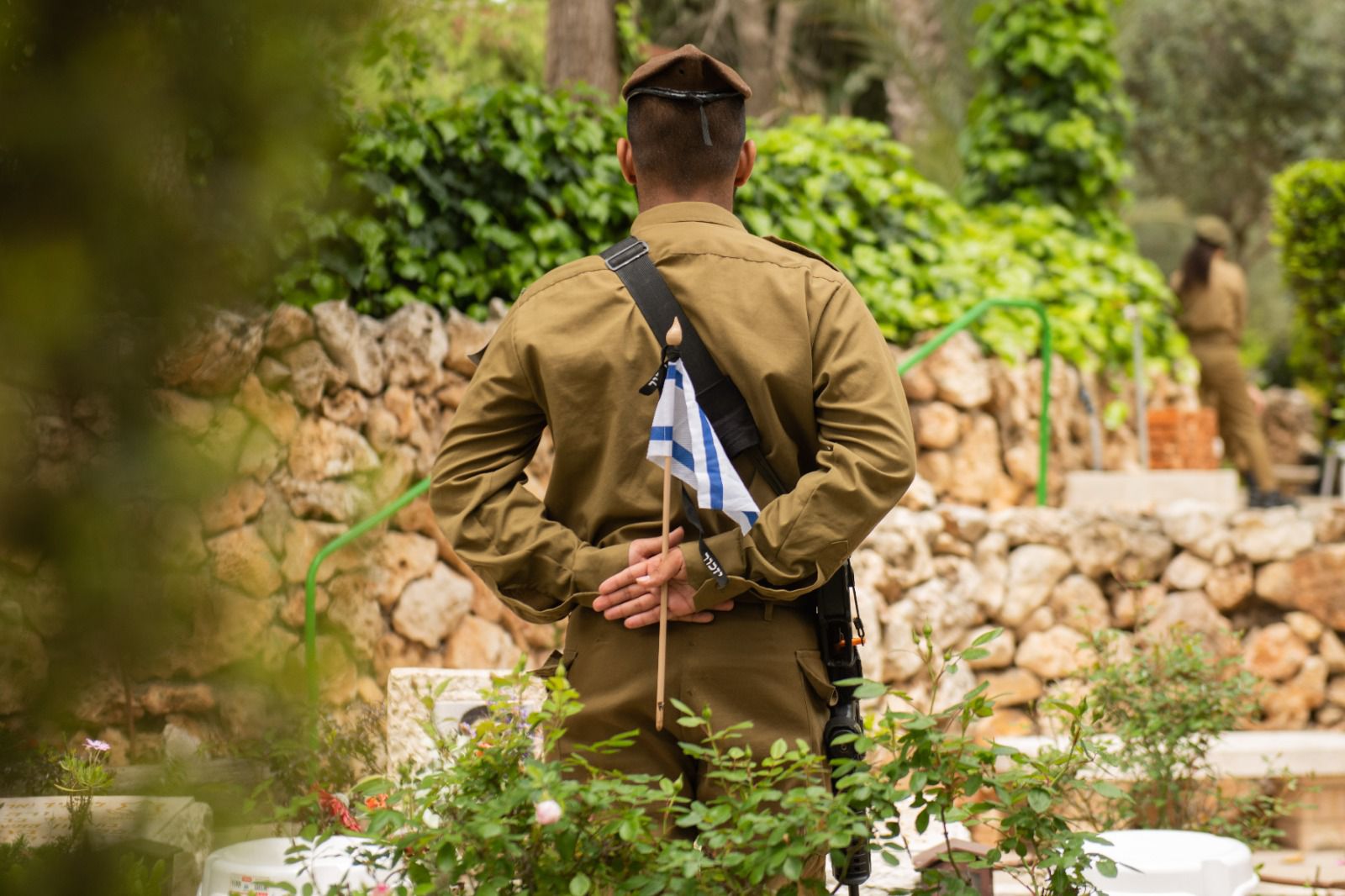Riverdale, NY—“Forty one battles of fear on the wall, forty one battles of fear.…” Catchy yes, but in this case there really is nothing to sing about but rather something to look at—an array of emotion-driven paintings that give testimony to the terrorism and bellicose circumstances that plague the State of Israel.
On Monday, the group Artists Supporting Israel came together at the Hebrew Institute of Riverdale to display pieces of their work that are part of a new initiative called the “Response Art Series.”Each participating artist was required to watch educational videos or podcasts about the Jewish Homeland and then respond towhat they saw with brush strokes and artistic expression.One video outlined how Israelis restrained in its ability to retaliate against the onslaught of attacks against it on every front, from Sderot to Sinai to Egypt to Jordan to Syria to Lebanon and to Gaza. And though Israel’s hands are proverbially tied and the country is restrained by various multi-border complications, a majority of the 41 paintings displayed at the show had no borders or frames (but they did have a lot of red). The grief captured on the canvases by these 19 “response artists,” most hailing from New Jersey, spilled over the edges, as did the hope in the more optimistic paintings.
Another video they watched portrayed the devastating effects rockets issuing from Gaza are having on the children and the community of Sderot. Since 2001, more than 10,000 rockets and mortar shells have hit Sderot and the surrounding area. The citizens have 15 seconds upon hearing the siren to get to a bomb shelter. That chaos was best portrayed upon the canvases of artist Sandra Steuer Cohen from Teaneck, New Jersey. Her multi-media 3-D textured pieces, called “Imagine Peace” and “An End to Terror,” included a mosaic of fractured elements including chains, hamsas, blood-stained tears, parchments of prayer, and a collared peace dove, etc. The components come together to reveal a turbulent aching for peace amongst the tumult of the broken peace processes.
Cohen says her work did not need to be inspired by the video, “I know from living in Israel many years, and from being subjected to all the terror which to me is reminiscent in many ways to the Shoah.”
She expresses that ironically in the past she has been told to take down some of her art from exhibitions because it was too graphic for children while less concern seems to be displayed for the actual Jewish children in Israel who are living through the “graphic” reality. Although she paints for peace, Cohen does not foresee an end to the terror. “I don’t see it ending because our enemies do not believe that Israel even exists,” she says. “They attack with lack of concern for whom they are attacking.”
Northern New Jersey artist Roberta Millman-Ide integrated what she saw in all the videos in her mixed media-assembláge,“Color Red.” Included in the video was one about the “Red Color” song—a song that the children of Sderot have learned to sing as a coping mechanism when they hear the code “color red” siren. Millman-Ide’s effective piece glowed with red filtered lights and metallic chains hung at the forefront—symbolic harsh filters of a rocky-textured work that included, hamsas, photos of children, as well as Epsom and koshers salts (undoubtedly echoing the salty tears of a struggling nation).
Nonetheless, the show’s founders have a very positive mission for Artists Supporting Israel. “We are a community of artists who are determined to use our art to call attention to Israel’s right to exist as an independent safe, secure and peaceful nation and to show the world what Israel is going through,” says co-founder Sheryl Intrator Urman, another Jerseyite and curator of the show. “A picture says a thousand words.” Her own impressionist paintings displayed there seemed to ignore the videos altogether. Her two pastel wax-on-canvas depictions, one of soldiers praying on a tank and one of a young boy wearing tefillin, were meant to show that Jewish life and values and traditions will not be subject to terrorism.
Co-founder and artist Fred Spinowitz echoes that same sentiment while quoting the famous Rav Abraham Isaac Kook, who once said that art in Israel should not be taken for granted because it represented the revival of the State. Spinowitz put his own spin on it and said, “Now is not about revival, but rather about survival.”
By Aliza Davidovit












